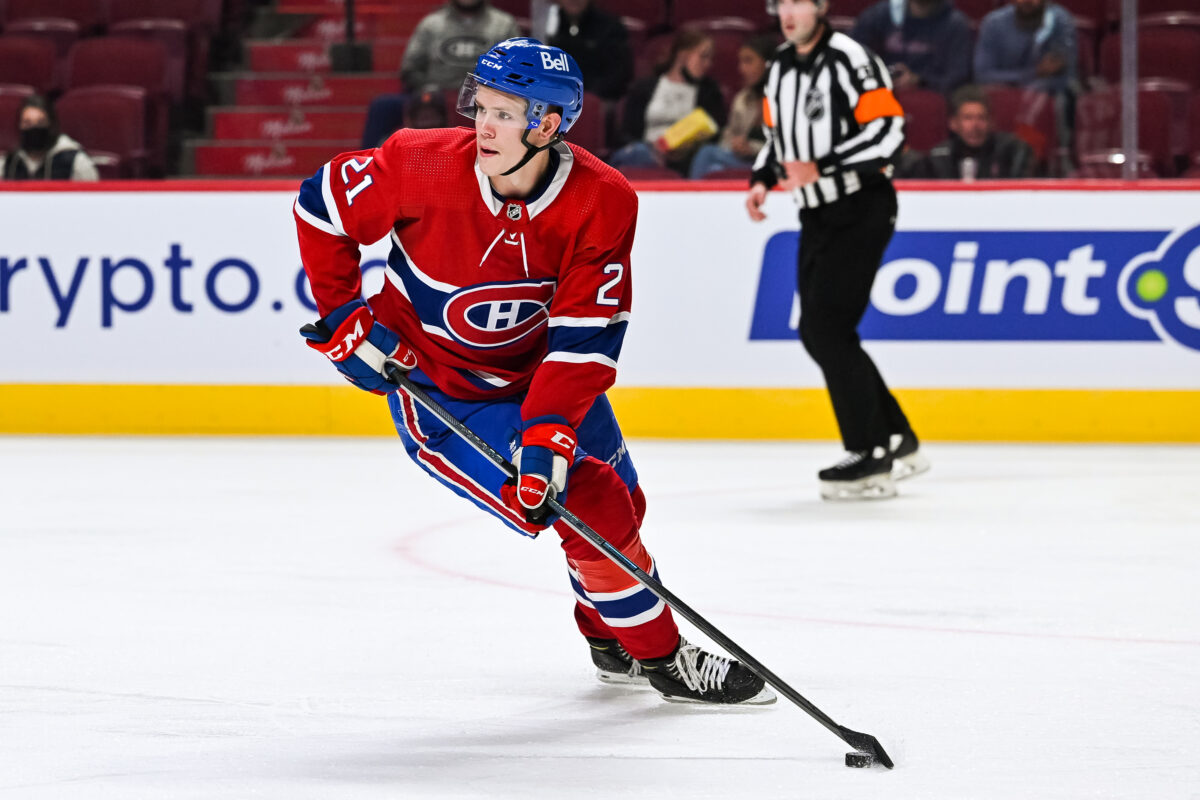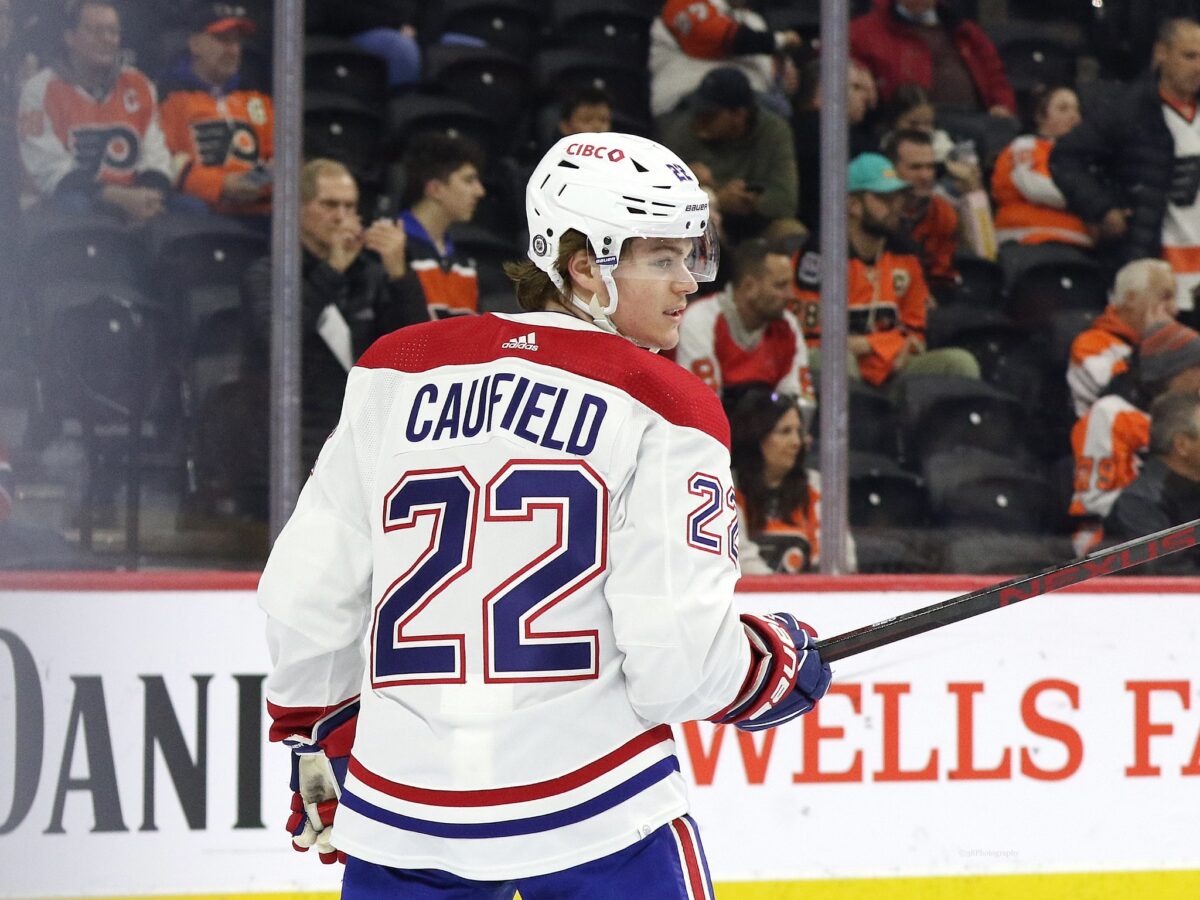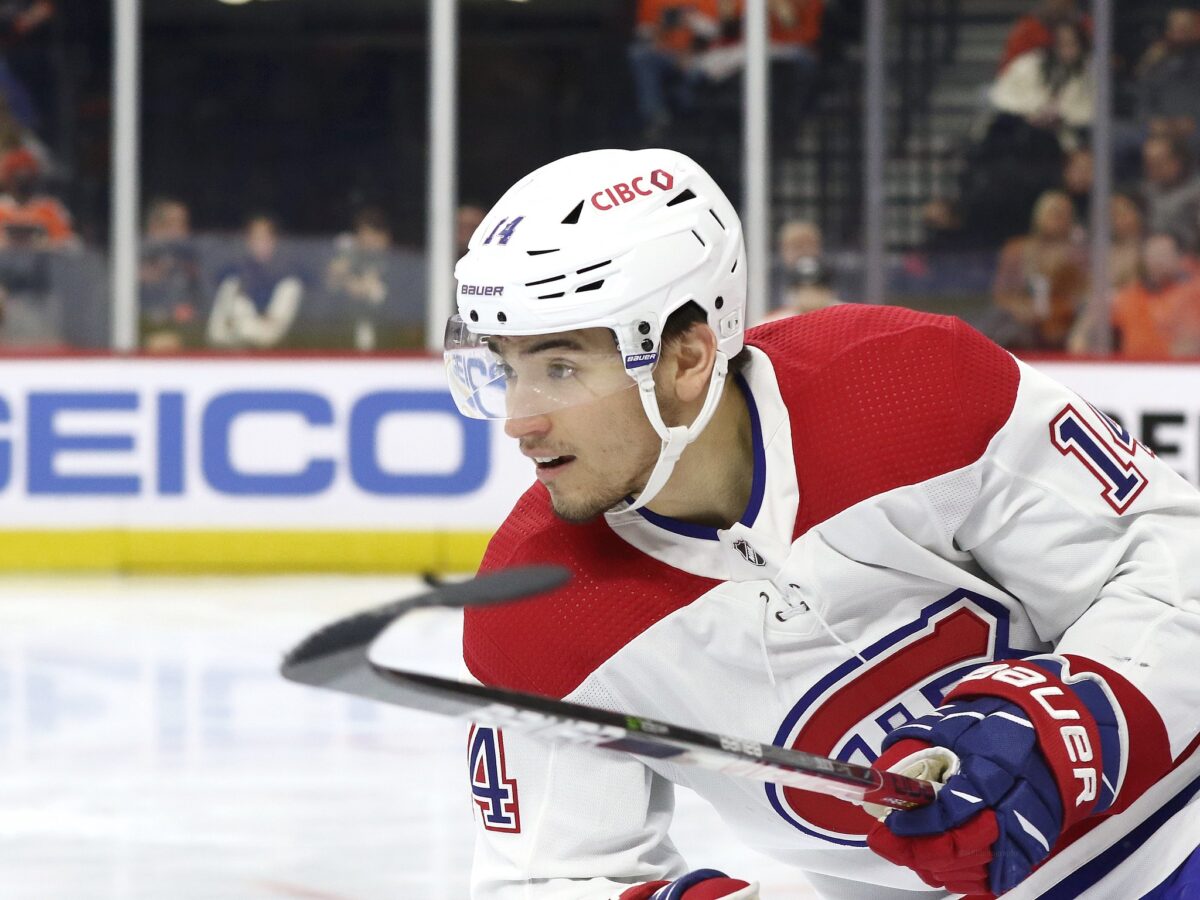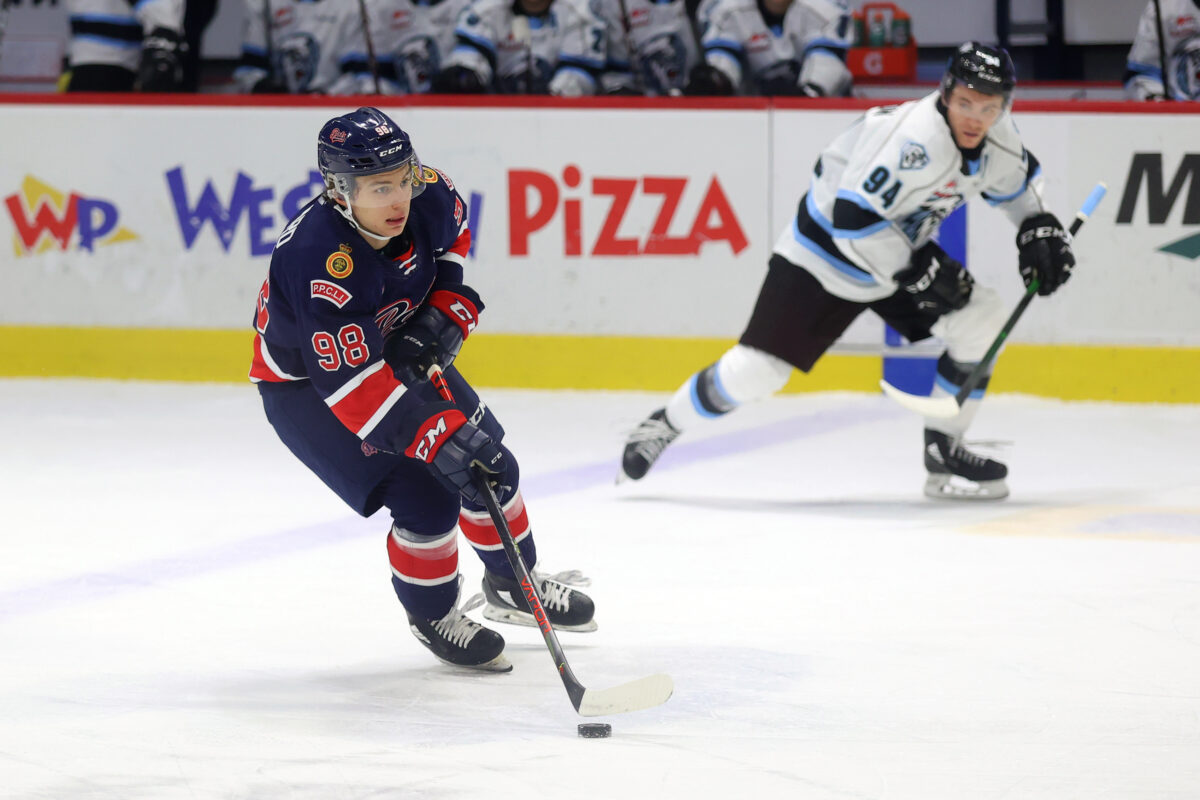The Montreal Canadiens may have lost more games than ever before in 2021-22, but, ironically, not all is lost. Sure, there are countless holes in the Habs’ lineup, but there are also countless assets, hypothetical untouchables even, amid arguments the Habs should try to acquire the second-overall pick at the 2022 NHL Entry Draft.
Already having won the No. 1 pick, the Habs simply can’t deny benefits of being able to draft both Shane Wright and Juraj Slafkovsky, for example. In the process, general manager Kent Hughes would theoretically be filling not one, but two huge holes in the way of them contending.

Safely assuming Wright is the first pick, because of course he is, what should the Canadiens trade to draft Slafkovsky? If you agree with those who believe the Habs should draft him at No. 1 instead, just about anything and everything. There are exceptions though, or at least there should be; five to be exact:
5. Justin Barron
Defenseman Justin Barron is far from the Canadiens’ top prospect, which, on one hand is a testament to the relative strength of the team’s pipeline on paper. On the other, him making this list, albeit at No. 5 overall, is a relative indictment of the number of quality defensive prospects the Habs have on the right side.
Related: The NHL’s Best Farm Systems Ranked
There’s really just Barron and Logan Mailloux. Because Mailloux remains a question mark as to how he fits in under the team’s new managerial regime, the Canadiens logically have to keep Barron in the fold… not that they would really trade a top-end prospect they just acquired at the 2022 trade deadline.
4. Kaiden Gule
In comparison, the Canadiens’ left side on defense is stacked. Even so, Kaiden Guhle stands out as arguably the Habs’ top prospect there and in general, making him untouchable.

Projected as a top-pairing defenseman, Guhle has drawn comparisons to Shea Weber, even with offensive upside (minus maybe the same level of goal scoring). Guhle’s most certainly going to be brought up by potential trade partners in the future, but think of how long the Canadiens waited to find someone to play on Weber’s left side. They’re technically still waiting, and Weber’s effectively retired.
Ultimately, there’s no logic in creating one hole just to fill another, especially seeing as Guhle’s already had a few seasons of development since he was selected at No. 16 overall in 2020. To a certain extent, they have at least a better idea of how he’s going to turn out compared to a prospect who has yet to be drafted.
Keep that sentiment in mind.
3. Cole Caufield
One of the big reasons why the Canadiens would want to acquire the second-overall pick (for example) is to maybe draft Slafkovsky. That would theoretically give them the big winger they need to play alongside Cole Caufield and Nick Suzuki, who comprise two thirds of a top line.
So, any outlandish suggestion the Canadiens should consider trading Caufield to draft Slafkovsky? Nonsensical, even if it’s rooted in an undeniable fact that Caufield is significantly smaller than Slafkovsky. Nevertheless, you’re talking about a player in Caufield who already has a few seasons of post-draft development under his belt and has proven capable of playing in the NHL and producing all the while.

True, Caufield’s rookie season didn’t go as planned. At one point, Caufield was the Calder Memorial Trophy favorite, only to put up just eight points in his first 30 games. Then Martin St. Louis replaced Dominique Ducharme as head coach and he scored 35 points (22 goals) the rest of the way. The rest of the way being 37 games.
For those uninterested in doing the math, that translates to nearly a point a game. Maybe more impressively? Caufield scored at 49-goal pace under St. Louis. Of course, it’s a small sample size, but it’s also more than Slafkovsky’s had up to this point. Are people still that blinded by size? You’d think St. Louis himself would have helped curbed that train of thought over the course of his career.
2. Nick Suzuki
Some may remain unconvinced Suzuki is a No. 1 center. Ex-head coaches who last made the playoffs a half-decade ago, even. In spite of subjective opinions, the facts state Suzuki is scoring at over a .70 point-per-game pace over the last two seasons, including the horror show that was 2021-22 to lead the team with 61 points.
Even if he doesn’t pan out as a No. 1 center, Suzuki is the best one the Canadiens have at just 23 years old, and he has yet to reach his prime. Already one of the most complete players the Habs have, Suzuki’s also under cost control for the next eight seasons and a candidate to replace Weber as captain, all things taken into account.

It wouldn’t be a stretch to say Suzuki is the team’s most valuable player right now. And, even though the Canadiens are likely to draft Wright, who can potentially usurp him as the team’s top pivot (or more realistically complement him as the No. 2), that doesn’t make Suzuki expendable. It would just prove you can’t have too many good centers, something the Habs have learned the hard way over the years.
1. 2023 First-Round Pick
Ultimately, all eyes are on fellow-center Connor Bedard at the 2023 NHL Entry Draft. He’s reason enough for any team to tank the 2022-23 season, but, even if the Canadiens don’t, there’s little reason to believe they won’t still be in the running for a projected generational talent in either Bedard, Matvei Michkov or Adam Fantilli.
So, while the Canadiens’ first pick in 2023 is a big trading chip, it should be taken off the table. One-season turnarounds are possible, but, objectively speaking, these Habs simply have too many holes to fill and aren’t ready to compete yet. It’s probably tempting to want to bet on yourself at this stage, but history is also littered with examples of teams that made similar mistakes by going all in too early.

The Toronto Maple Leafs decided to acquire Phil Kessel, trading away three picks, including selections that turned out to be the second-overall pick in 2010, Tyler Seguin, and the ninth-overall pick in 2011, Dougie Hamilton. The Leafs then made the playoffs just once in six seasons with Kessel, before determining they couldn’t win with him and then traded him away as arguably part of their own tank job.
You don’t even need to look far for another example. Just last summer ex-Canadiens GM Marc Bergevin traded away a conditional first-round pick (and second-round pick) to acquire Christian Dvorak. Despite flashes of success as a second-line center, Dvorak would not have been worth the first-overall pick the Habs just won, not even close.
Thankfully, Bergevin got top-10 protection put into the trade. The point remains it would be hard to argue Dvorak would have been worth giving up a first-round pick just outside the Top 10 too. As it stands, with the Arizona Coyotes instead getting the Carolina Hurricanes’ selection, which will be quite low, the deal is more digestible. Regardless, logically Bergevin fails to make that deal if he isn’t looking to make the playoffs in 2021-22. The fact that the Canadiens didn’t (in grandiose fashion no less) makes it a huge miscalculation.
The Habs are effectively in a position where they’re likely to draft Wright, who will realistically develop into that second-line center instead. Dvorak doesn’t necessarily become redundant, because the Habs are still weak down the middle and he can be of use, but it all goes to show GMs are not immune to getting ahead of themselves and mistakes in general.
The Canadiens obviously have needs that can be addressed via trade, just not at any cost. In this case, a first-round pick next season (and the other names on the list) are just too valuable to justify moving in the name of speeding up a rebuild. Any such trade would only hurt a rebuild instead.